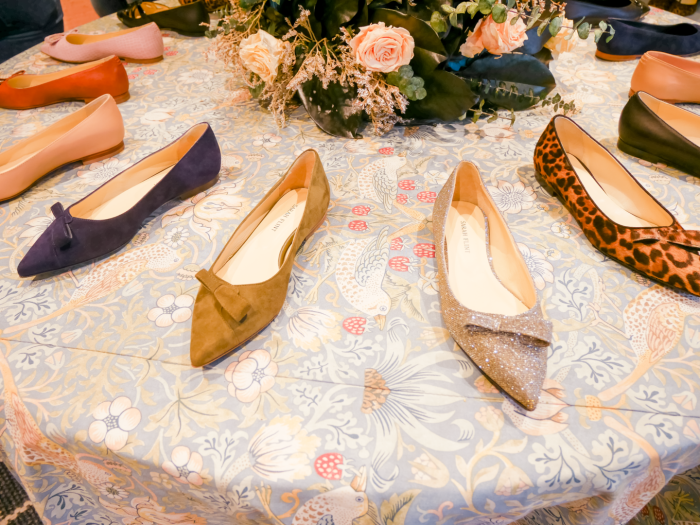As awareness of the environmental and social impact of the fashion industry grows, many consumers are turning to sustainable and ethical fashion choices. Shopping with sustainability and ethics in mind can make a positive difference, not only for the planet but also for the people involved in the production process. Here’s your ultimate guide to shopping for sustainable and ethical fashion.
1. Understand What Sustainable and Ethical Fashion Means
Sustainable fashion focuses on minimizing the environmental impact of clothing production and consumption. This includes using eco-friendly materials, reducing waste, and minimizing carbon footprints. Ethical fashion, on the other hand, emphasizes fair labor practices, safe working conditions, and fair wages for workers.
Brands that excel in both areas often use organic or recycled materials, avoid harmful dyes and chemicals, and ensure that their production processes are transparent and responsible. Understanding these concepts will help you make more informed choices when shopping.
2. Look for Certifications and Labels
One of the easiest ways to identify sustainable and ethical brands is by looking for certifications and labels. These certifications can help you verify that a brand meets certain environmental and social standards. Some reputable certifications include:
- Global Organic Textile Standard (GOTS): Ensures that fabrics are organic and produced under environmentally and socially responsible conditions.
- Fair Trade Certified: Guarantees fair wages and ethical working conditions for workers.
- OEKO-TEX Standard 100: Ensures that textiles are free from harmful substances.
Brands with these certifications are more likely to adhere to sustainable and ethical practices. For a comprehensive list of certifications and what they mean, check out Good On You, a resource dedicated to ethical fashion.
3. Support Brands with Transparent Practices
Transparency is key in the sustainable and ethical fashion industry. Look for brands that openly share information about their supply chain, production processes, and sourcing. Brands that are committed to sustainability will often provide details about their environmental impact, the materials they use, and the working conditions in their factories.
For example, brands like Patagonia and Reformation are known for their transparency and commitment to sustainability. By supporting these brands, you can ensure that your purchases align with your values. For a list of brands that prioritize transparency, visit Ethical Consumer.
4. Opt for Quality Over Quantity
One of the principles of sustainable fashion is to buy less but better. Investing in high-quality, timeless pieces means that your clothing will last longer and reduce the need for frequent replacements. Quality garments are made from durable materials and crafted with attention to detail, which helps them withstand regular wear and tear.
When shopping, consider investing in classic items that can be worn in various settings and seasons. This approach not only supports sustainability but also helps you build a versatile wardrobe.
5. Explore Secondhand and Vintage Shops
Shopping secondhand or vintage is one of the most sustainable choices you can make. By purchasing pre-loved clothing, you’re extending the lifecycle of garments and reducing the demand for new production. Secondhand and vintage shops often offer unique and high-quality pieces at a fraction of the cost of new items.
Websites like ThredUp and Depop make it easy to find secondhand clothing online, while local thrift stores and consignment shops can be treasure troves for vintage finds. For tips on how to shop secondhand effectively, check out The Good Trade.
6. Choose Brands That Use Eco-Friendly Materials
Eco-friendly materials play a crucial role in sustainable fashion. Look for brands that use organic cotton, recycled polyester, Tencel, or other sustainable fabrics. These materials typically have a lower environmental impact compared to conventional fabrics.
For instance, organic cotton is grown without synthetic pesticides or fertilizers, while recycled polyester is made from post-consumer plastic bottles, reducing waste. Brands like People Tree and Stella McCartney are known for their commitment to using sustainable materials.
7. Consider Clothing Rental Services
Clothing rental services are an excellent option for those who want to enjoy fashion without the commitment of permanent ownership. Renting clothes for special occasions or everyday wear allows you to access a wide range of styles while minimizing waste.
Companies like Rent the Runway and HURR Collective offer rental options for both casual and formal wear, making it easy to stay stylish while supporting sustainable fashion practices. Renting is also a cost-effective way to experiment with different styles without adding to your wardrobe.
Conclusion
Shopping for sustainable and ethical fashion is about making conscious choices that benefit both people and the planet. By understanding what sustainable and ethical fashion entails, looking for certifications, supporting transparent brands, opting for quality over quantity, exploring secondhand options, choosing eco-friendly materials, and considering clothing rental services, you can make a significant impact with your purchases.
For more insights and resources on sustainable fashion, visit Sustainable Fashion Matterz, a platform dedicated to promoting eco-friendly fashion choices and practices.







